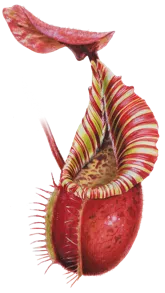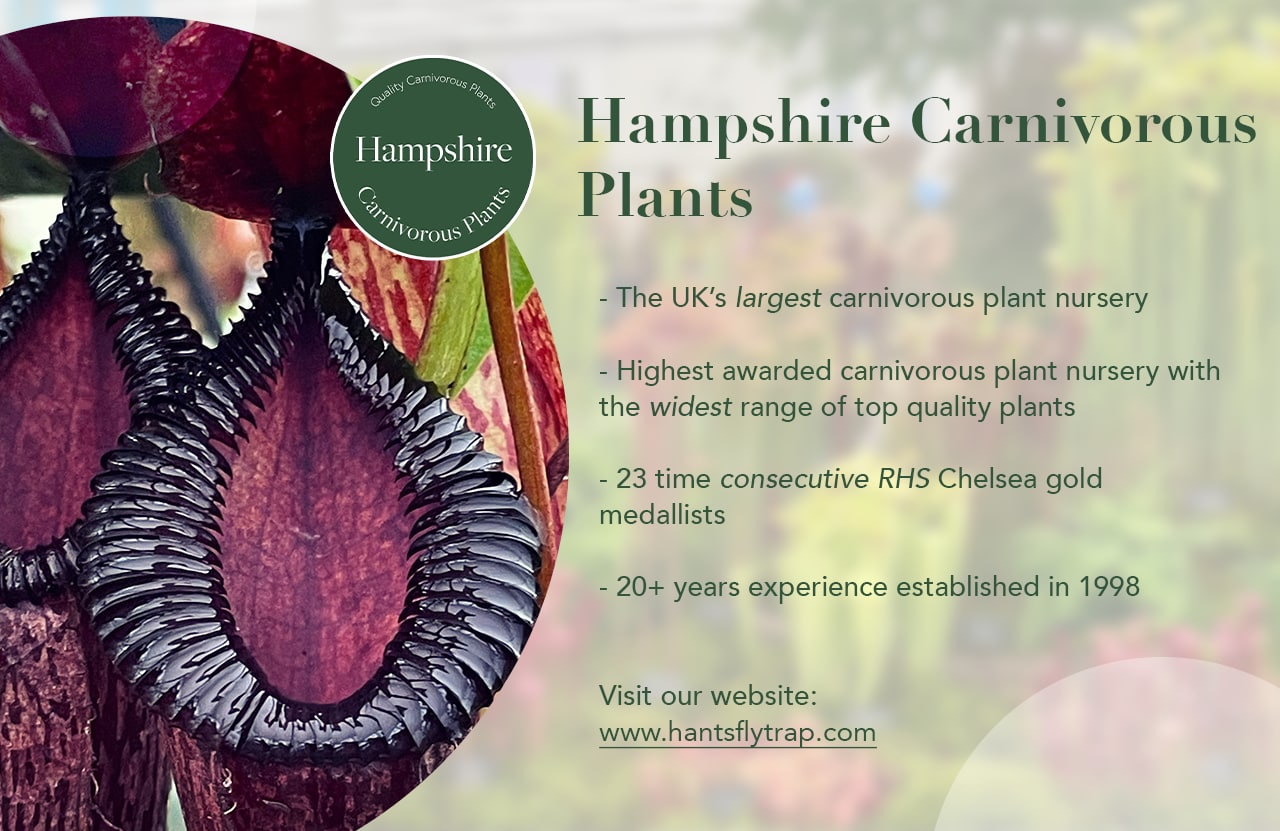Nepenthes ephippiata
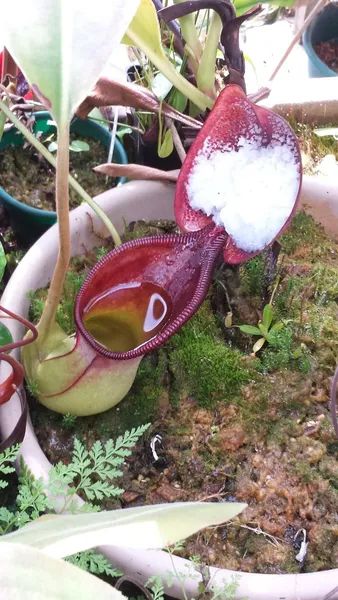 An upper pitcher on N. ephippiata, grown by Jeff Shafer
An upper pitcher on N. ephippiata, grown by Jeff Shafer 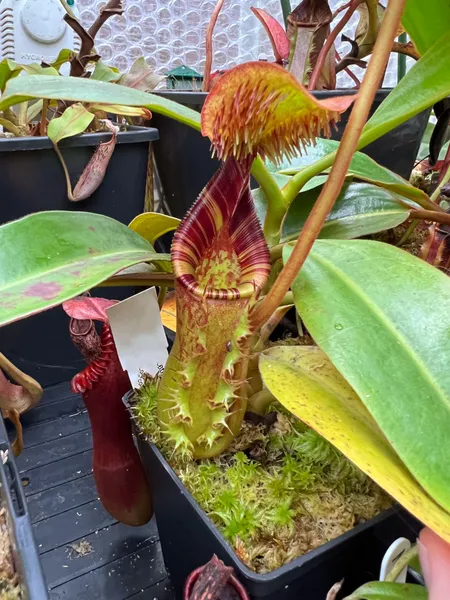 Lid hairs, exudate, stripes, frilly wings - what is not to like about this species!
Lid hairs, exudate, stripes, frilly wings - what is not to like about this species! 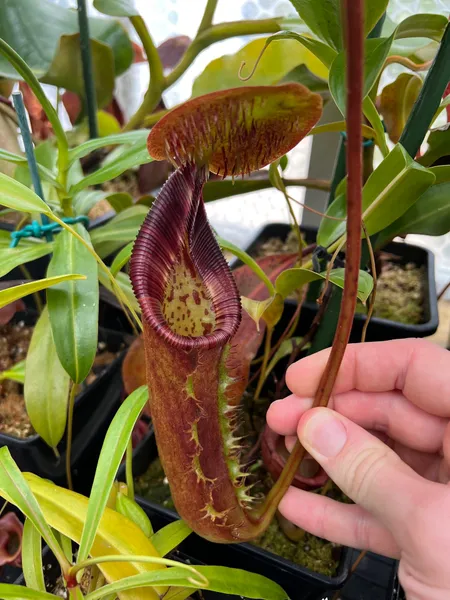 Lower pitcher on a basal offshoot on my big plant
Lower pitcher on a basal offshoot on my big plant 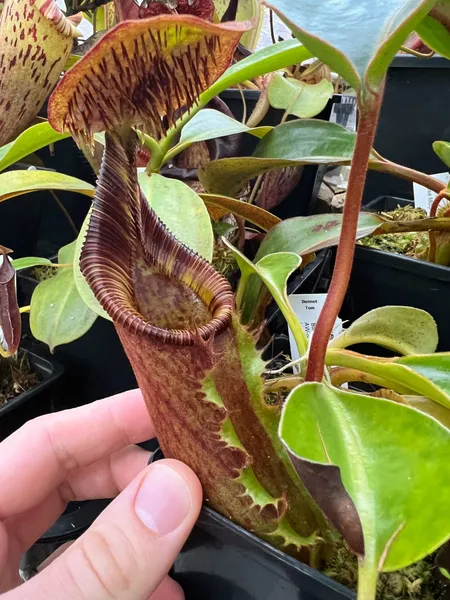 Lower pitcher on my N. ephippiata 'Hose Mountains', grown from seed
Lower pitcher on my N. ephippiata 'Hose Mountains', grown from seed 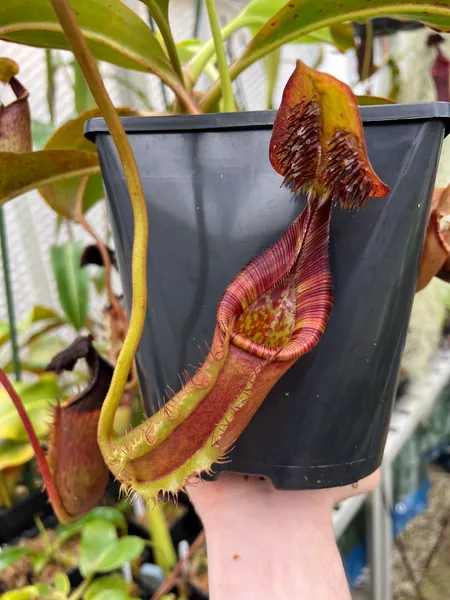 Lower pitchers, soon to transition to uppers hopefully
Lower pitchers, soon to transition to uppers hopefully 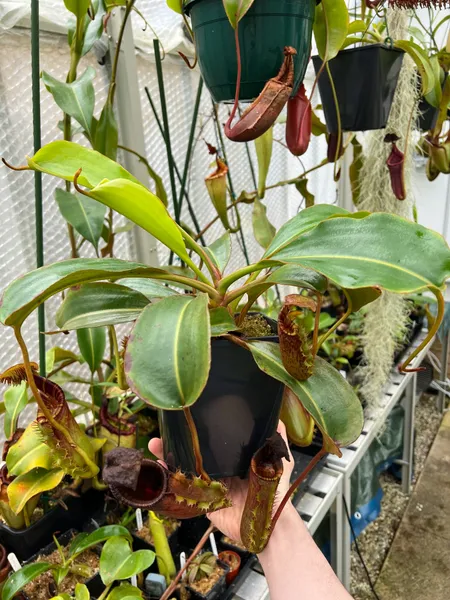 My largest Hose Mountains plant
My largest Hose Mountains plant 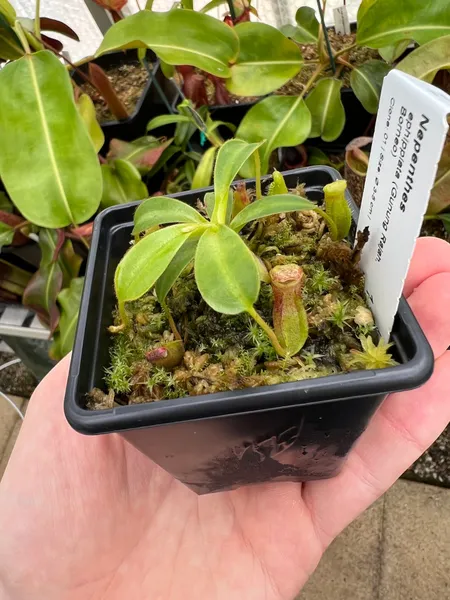 This is the only other N. ephippiata I have - it's the Gunung Raya form
This is the only other N. ephippiata I have - it's the Gunung Raya form Description & Care
Nepenthes ephippiata is a very hard-to-find species, both in the wild and in cultivation. Native to some of the most remote parts of Borneo, the species is named for the huge, saddle-shaped lids found on its upper pitchers.
The species is closely related to Nepenthes lowii. Pitchers on both species are tough and woody in texture, with long bristly hairs growing on the underside of the lids of the lowers. Both species have dramatically distorted upper pitchers that produce copious amounts of exudate. It’s likely that N. ephippiata, like its close relative, uses this as bait to attract shrews and other small mammals that leave their droppings in the pitchers, but this has yet to be confirmed.
There are two forms circulating in cultivation. The first is from Mount Raya in Kalimantan (this one’s often available from tissue culture, including from Borneo Exotics), and the second is from the Hose Mountains of central Sarawak. The latter is - in my experience - easier to cultivate. It also produces larger pitchers with striking red/purple coloration. Some experts believe these two forms will one day be separated by taxonomists into separate genera - I’m yet to grow the Raya form to maturity, so cannot comment.
The Hose Mountains form is particularly easy to cultivate, at least compared to other highland species like N. lowii. It’s tolerant of intermediate through to highland conditions, and grows steadily year-round as long as humidity and light remain optimal. Overall, a stunning species and one of my favourites - highly recommended!
How I Grow It
| Media | Long fibre sphagnum moss, perlite, and - optionally - orchid bark (2:1:1). |
| Water | Damp but not wet. |
| Light | Very bright, diffused light. |
| Fertiliser | Maxsea or liquid orchid feed in the pitchers, every two weeks. |
| Temperatures | The Hose Mountains form is not picky, and grows well in intermediate or highland conditions. Easier than the G. Raya form, or N. lowii. |
| Humidity | 70% during the day, rising to over 90% at night. |
Learn more about cultivation with my guide to growing Nepenthes.
Day & Night Temperatures
Nepenthes ephippiata is a highland species, found at elevations of between 1300 and 2000 meters. This range is highlighted in orange above, and equates to temperatures of approximately 22 - 29°C during the day, and 12 - 19°C at night.
See Also
I've written profiles of the following hybrids involving Nepenthes ephippiata:
Habitat
| Native to | Borneo |
| IUCN Red List status | Vulnerable |
| Natural hybrids | None known |
Buying N. ephippiata
| Availability | One of the hardest Nepenthes species to find! Even tissue cultured seedlings are rare in cultivation. |
| Borneo Exotics codes |
|
| Recommended nursery | California Carnivores Hampshire Carnivorous Plants |
